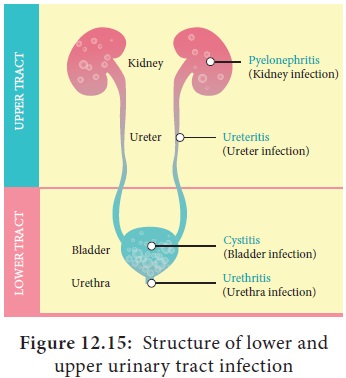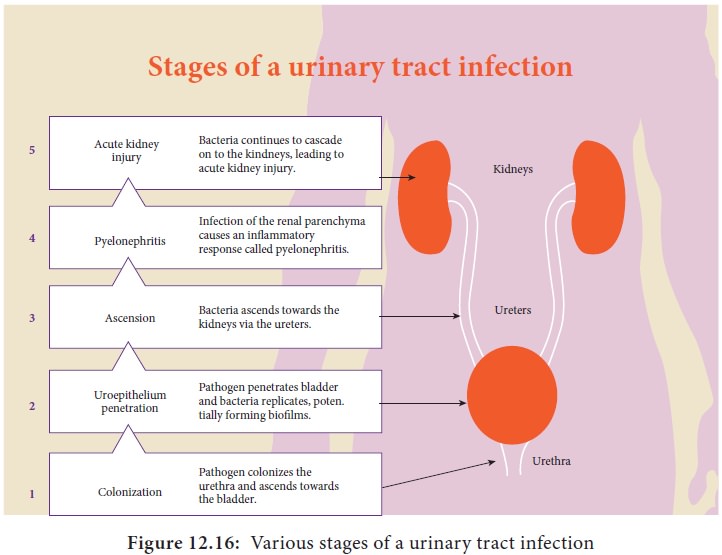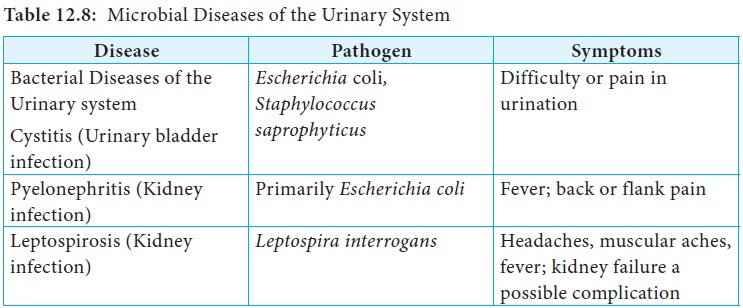Chapter: 11th Microbiology : Chapter 12 : Medical Microbiology
Urinary Tract Infections - Medical Microbiology
Urinary Tract Infections
The urinary system is composed of organs that regulate the chemical
composition and the volume of the blood excrete mostly nitrogenous wastes
products and water. The urinary system consists of two kidneys, two ureters, a
single urinary bladder and a single urethra. Wastes are removed from the blood
as it circulates through the kidneys (Figure 12.15).

Infections of the kidney, ureter and bladder constitute Urinary
Tract Infections (UTI). When infection occur in the kidney and ureter it is
called upper urinary tract infections and bladder downwards is called lower urinary
tract infections. Urinary tract infection is common in females than males. The
urinary system normally contains few microbes but it is subjected to
opportunistic infections that can be quite troublesome. Almost all such
infections are caused by bacteria although occasional infections by pathogens
such as parasites, protozoa and fungi also occured. Microorganisms invloved in
UTI are listed in Table 12.7.

Predisposing Factors for UTI
Urinary tract infection is common in females than in males. The urethra in females are shorter and wider and is less effective in preventing the bacteria entering the bladder.
Sexual intercourse is a predisposing factor in females. High incidence is seen in pregnant women due to hormonal changes and impairment of urine flow due to pressure on urinary tract.
Urinary Tract Infection caused by Escherichia coli
Escherichia coli is the predominant
cause of UTI.
It is a normal flora of the gut and can cause extra intestinal
infections (UTI, Wound infection.) UTI (it can also be involved in other
infections like wound infection peritonitis) UTI is common in married women (b)
elderly men with prostate enlargement.
Pathogenesis of cystitis in woman
Bladder infections can result from the downward migration of
organisms from an infected kidney. But majority arise by ascent of pathogens
from the rectum and vagina to the urethra meatus and bladder, leading to
cystitis. If left untreated, the infection can further ascend to involve the
kidneys (pyelonephritis) (Figure 12.16).

The rectum and vagina function as the reservoir of bacteria for
sporadic infections
In men, the longer urethra is believed to protect against
ascending infections.
When Escherichia.coli
(and other Gram Negative rods) causes UTI, usually the number of organisms in
freshly passed urine is more than 100,000 organisms/ml.
This is called “significant bacteriuria”. Counts less than this
is associated with contaminants from urethra or externalia. Infection of
urinary tract are listed in Table 12.8.

Related Topics